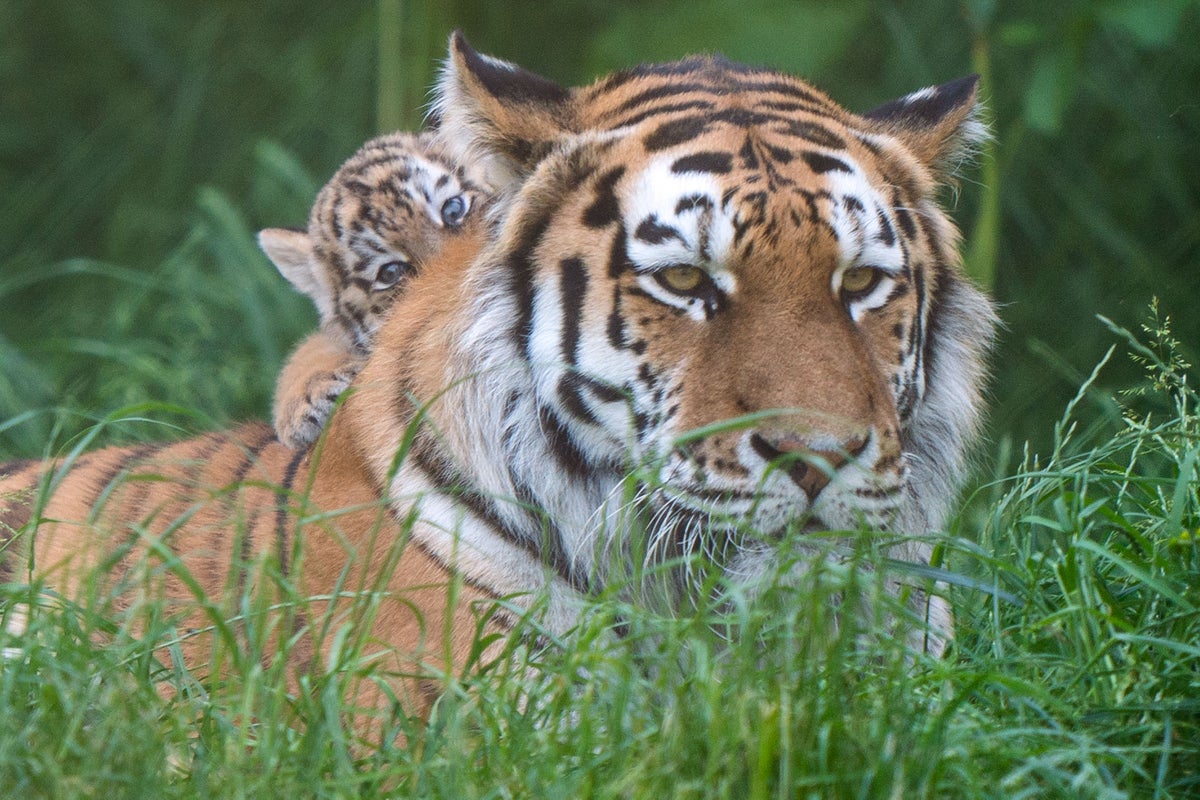
A pair of endangered tiger cubs have been exploring their enclosure as they grow in confidence.
Their mother Mishka, aged seven, gave birth to three Amur tiger cubs at Banham Zoo in Norfolk on May 1.
One of the triplets was found dead six days later on May 7, with a post-mortem examination recording that it had “struggled to suckle from Mishka”, the zoo said.
A spokesman said that the first eight weeks are “incredibly risky” for tiger cubs.
The two surviving cubs are “doing well and growing in strength” and “growing in confidence as they begin to move around more”, Banham Zoo said.
In recent days, the pair took their first steps out into their enclosure.
“The pair are gaining strength and confidence, and can be seen for short periods of time throughout the day exploring their new environment,” the zoo said.
The cubs are a legacy to their father Kuzma, who was the zoo’s resident male Amur tiger and died in March aged 14.
There are thought to be around 500 Amur tigers left in the wild, with the species classed as endangered.
Mishka moved to Banham Zoo from Woburn Safari Park in 2021 as part of the European Breeding Programme for the species, intended to protect endangered animals from extinction.
She had been identified as a genetically compatible mate for Kuzma.
Amur tigers are the largest of the world’s big cats as well as the heaviest.
Adult males can weigh up to 360kg (56 stone 9lbs) and reach 2.3 metres (7 foot 6ins) in length.
They are solitary animals found primarily in Russia, where they live in forests and have large territories, which they scent-mark to communicate to other tigers.
Also known as Siberian tigers, they are one of nine subspecies of tiger – three of which are now extinct.
Due to its Siberian habitat, the Amur tiger has a long coat of fur and a large ruff around its jawline.
Amur tiger mothers seek out secluded den sites to protect their offspring from potential predators and to shelter them from the worst of the elements.
The zoo has announced it will confirm the cubs’ sexes and name them in the coming months.







